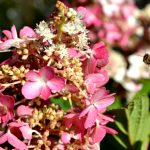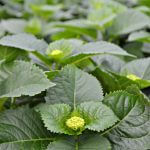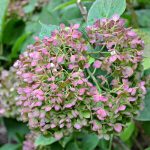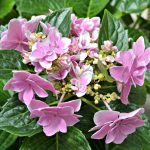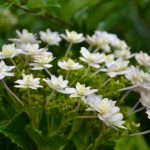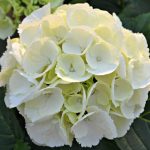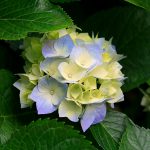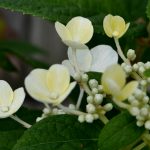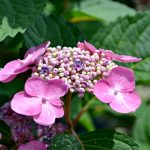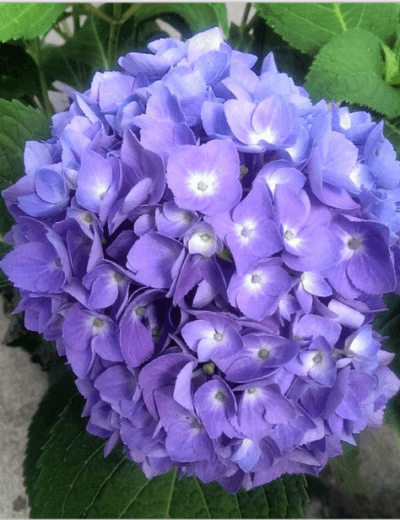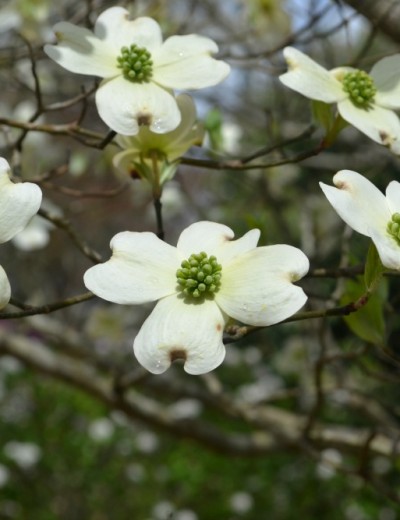The color of a hydrangea can be manipulated by changing the pH of the soil. More alkaline soils cause the blooms to be pink, if the soil is on the acidic side the blooms will be in the blue & purple shades.
Hydrangeas grown in containers are much easier to “custom” color than the ones planted in garden soil.
Adding lime, or gypsum, results in blooms in the pink spectrum, on the other hand, adding aluminum sulfate or sulfur will contribute to a more acidic soil & bluer blossoms. In reality it is the absence of aluminum in the growing medium that determines the colors. Hydrangeas grown in pine bark mulch, which is acidic, are pink because there in no aluminum in the pine bark.
To add to all this mix keep in mind some hydrangeas are genetically programmed to be pink or white.
To change color of Hydrangeas:
- To produce BLUE flowers add Aluminum Sulfate.
- To produce PINK flowers add Lime.
(Remember this needs to be done in the fall prior to bloom to give enough time to be evenly distributed.)
Our experts at Fairview Garden Center created this video to show you exactly how to manipulate the color of your hydrangea.
Hydrangea macrophylla
This group of Hydrangeas is commonly known as “Mopheads” and “Lacecaps” because of the distinctive shapes of their huge flower clusters in shades of pinks, reds, blues, and purples. These are probably the Hydrangeas you remember from your grandmother’s garden. The “litmus test” plant, H. macrophylla will display different colored flowers based on your soil’s acidity or alkalinity (which you can adjust with lime or acidic organic matter). Usually in the 4-6’ range in both height and width, there are some smaller exceptions (noted in individual plant descriptions).
Hydrangea quercefolia
The beautiful native, Hydrangea quercefolia, also known as the oakleaf hydrangea (the leaves resemble those on a red oak tree) is a must have. It can take more sun, can be taller, has long panicle shaped blooms (think upside down ice cream cone) of white which turn pink & eventually burgundy as fall rolls around. The leaves turn a deep burgundy color. The stems are a beautiful, cinnamon color, shedding in small shaggy pieces, that adds interest to the winter garden along with the leaves that hang on into the early winter months.
Climbing Hydrangea
One of the prettiest hydrangeas is the climbing hydrangea (Hydrangea anomala). It is very slow starting but once it decides to grow watch it scamper up a tall tree. It comes with built in rootlets to cling vigorously to what ever it is against & is deciduous. I have seen it as high as 20 feet if full bloom in Cary (it can go higher), a striking to say the very least! The blooms are white, 6-10 inches across, of the lace cap form in May & June.
Presently there are many different cultivars in stock at Fariview with many more to arrive closer to bloom time. Keep your eyes open for: Endless Summer/Twist ‘n Shout (a new & improved Endless Summer), Penny Mac, Big Daddy, Nikko Blue, Lady in Red, Pia, Fuji, Mme Emile Mouiillere, Veitchii, BlushingBride, Limelight, Pee Gee, Tardiva, Snow Queen, Pinky Winky, Annabelle, Quickfire, Pee Wee and the climbing H. a. subspecies petiolaris .


